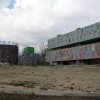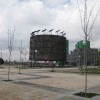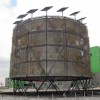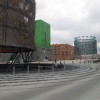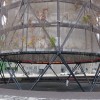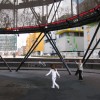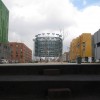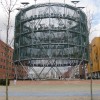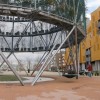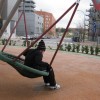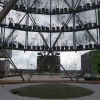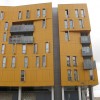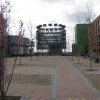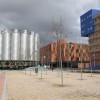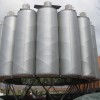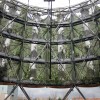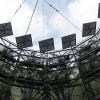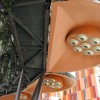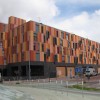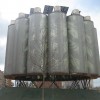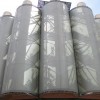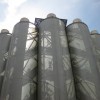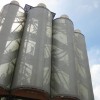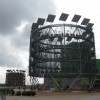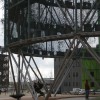Video
Much to the chagrin of many Spanish bar owners and restaurateurs, 2011 rang in the New Year with strict (and controversial) anti-smoking laws on January 2. For Spain and its “live and let live” attitude, these new regulations mark the end of an era for the country and its strong café culture of tapas, beer, and smoke. While the country is dedicated to eliminating smoke-filled spaces, Madrid is taking it one step further by actually creating healthy air one neighborhood at a time – starting with the Vallecas neighborhood south of the city. After years of ongoing development and poor city planning, the city council of Vallecas realized that the area was severely lacking in green areas. The city of Madrid (along with the European Union) launched a competition looking for architects that could create a viable social design that reflected the community’s environment-friendly goals.
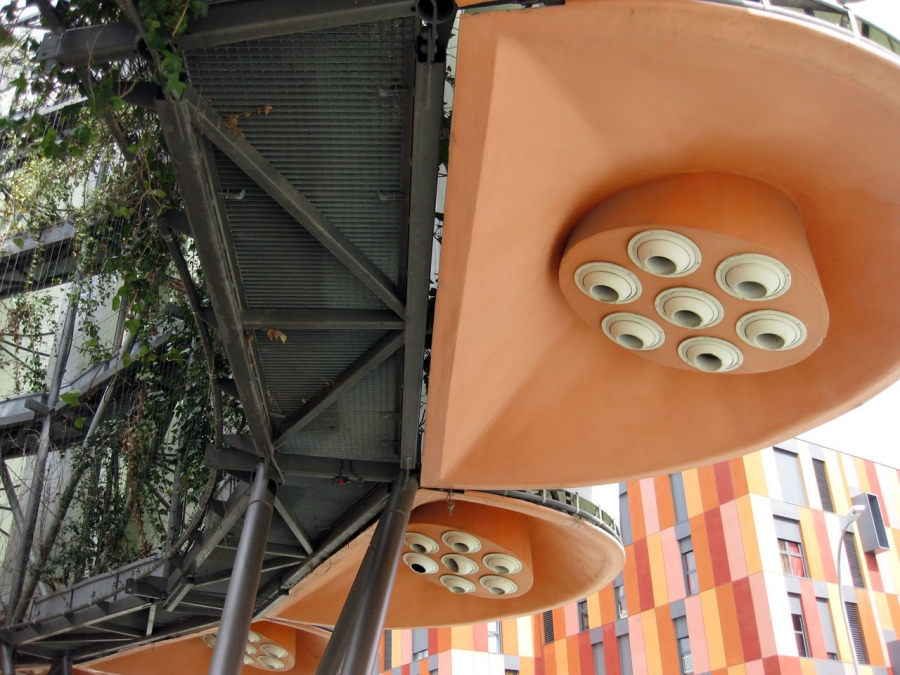
The relatively unknown architects at Ecosistema Urbano rose to the challenge and won the competition. Their innovative Eco-Boulevard project was designed to “climatically transform” outdoor urban spaces. The original design space included a 25,000 m2 (approx. 269,098 sq. ft.) boulevard lined with three “Air Trees” – large ecological community pavilions ideal for social activities, playgrounds, sporting events, and more.
Air Trees by Ecosistema Urbano
Air Trees are a revolutionary concept for new urban planning and neighborhood revitalization projects looking to combine community activity with ecological sustainability. The “tree” structures serve as sustainable community centers that actively contribute to the well-being of the neighborhood. They are built from a variety of repurposed industrial materials such as recycled plastic, greenhouse fabric, rubber tires, etc. The structures are also 100% self-sufficient due to the photovoltaic panels placed on top, which provide more than enough energy for on-site needs such as concerts and lighting. Surplus electricity is sold back to the grid, which pays for the maintenance costs of the Eco-Boulevard park area.
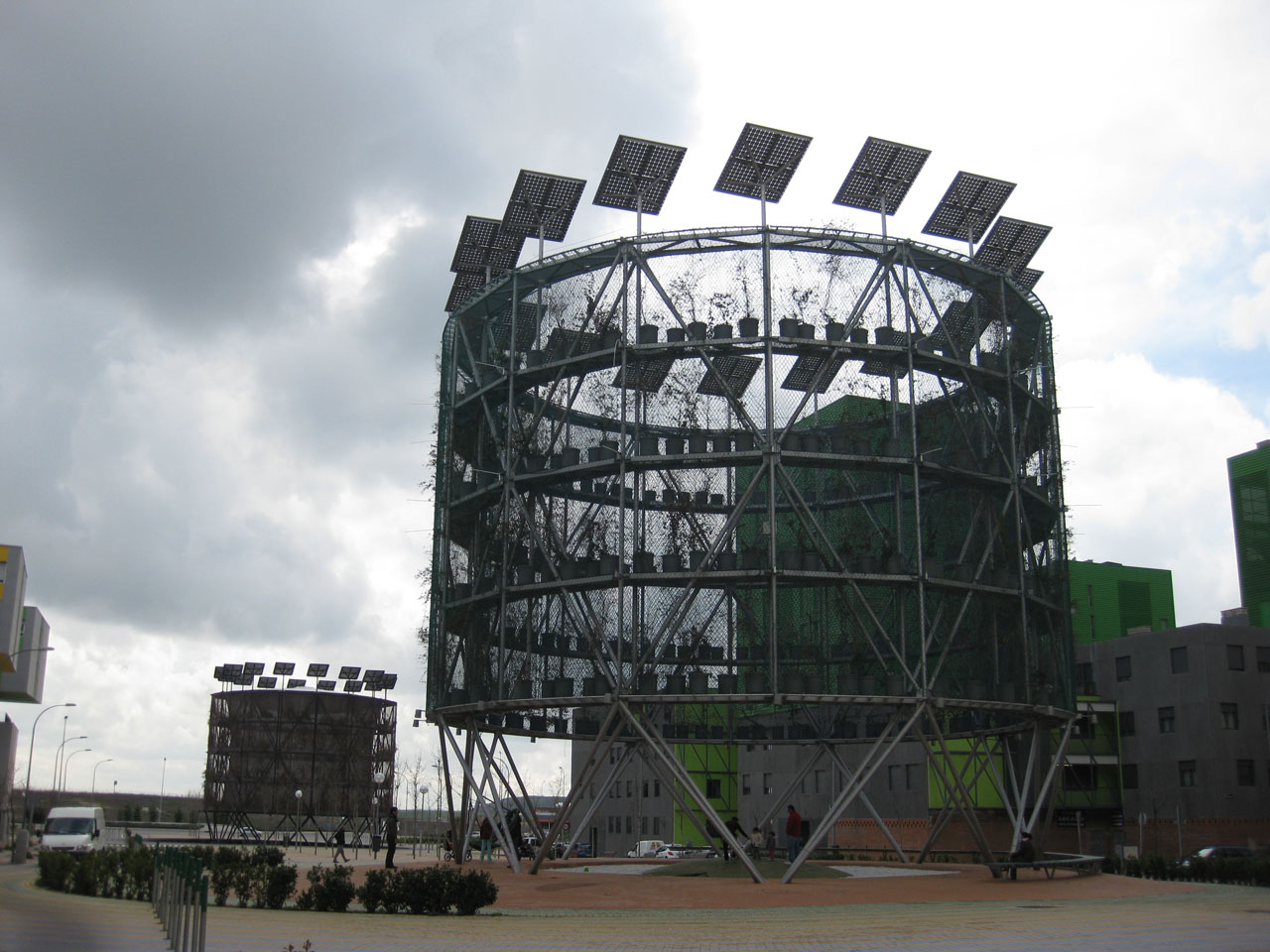
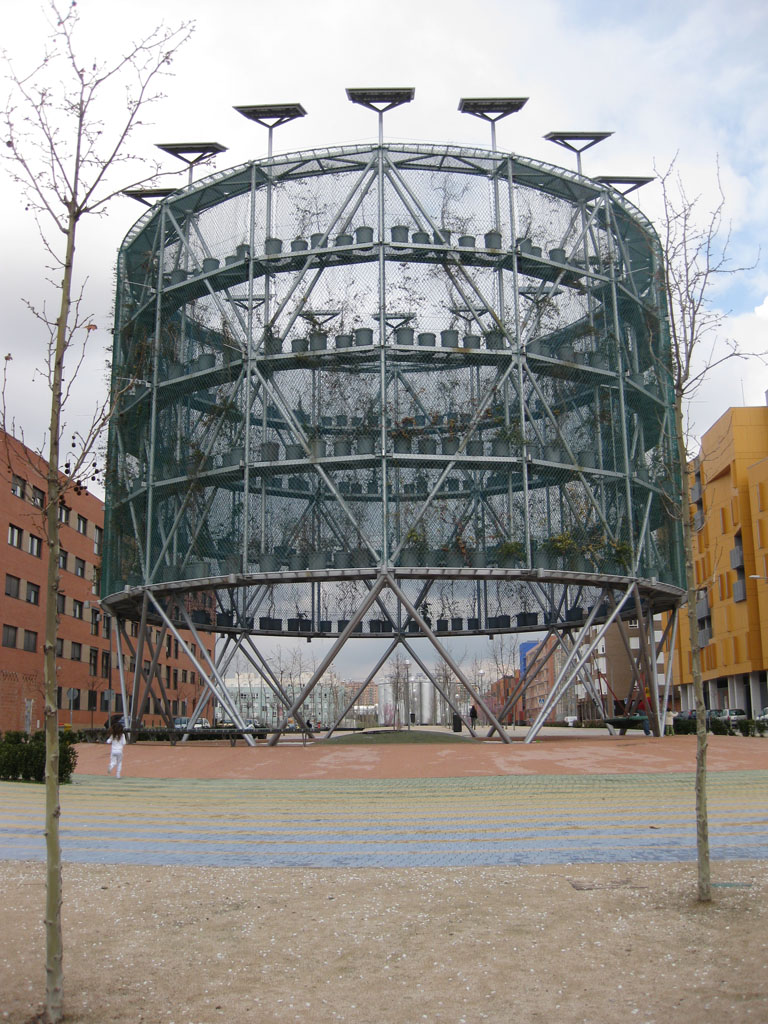
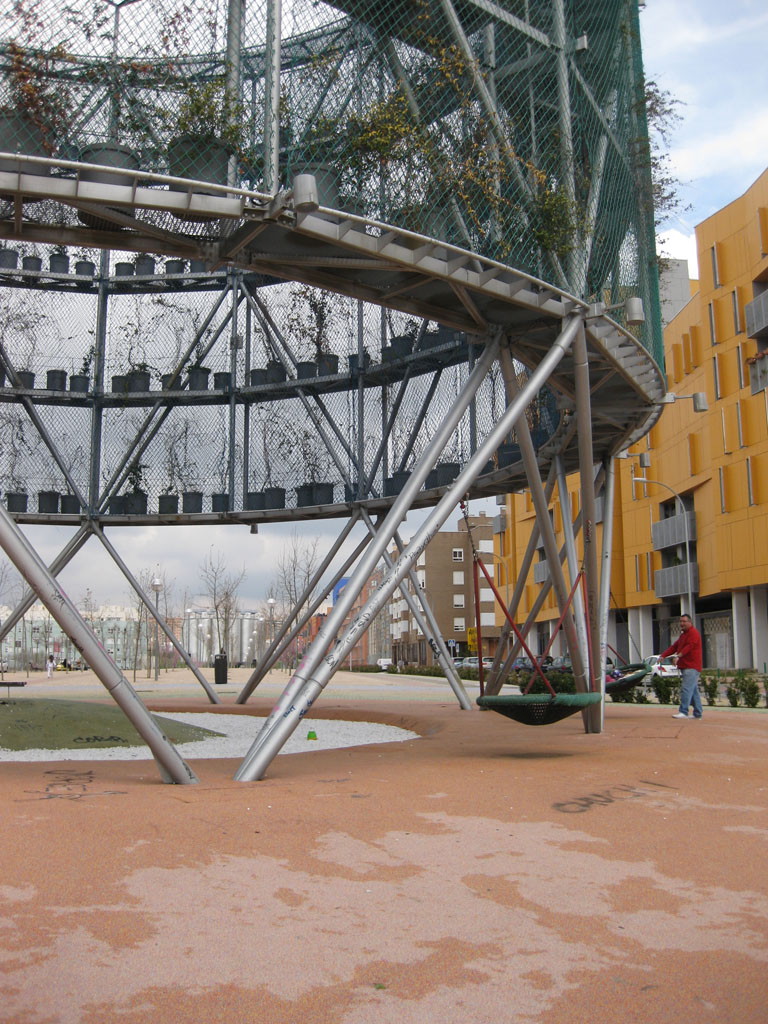
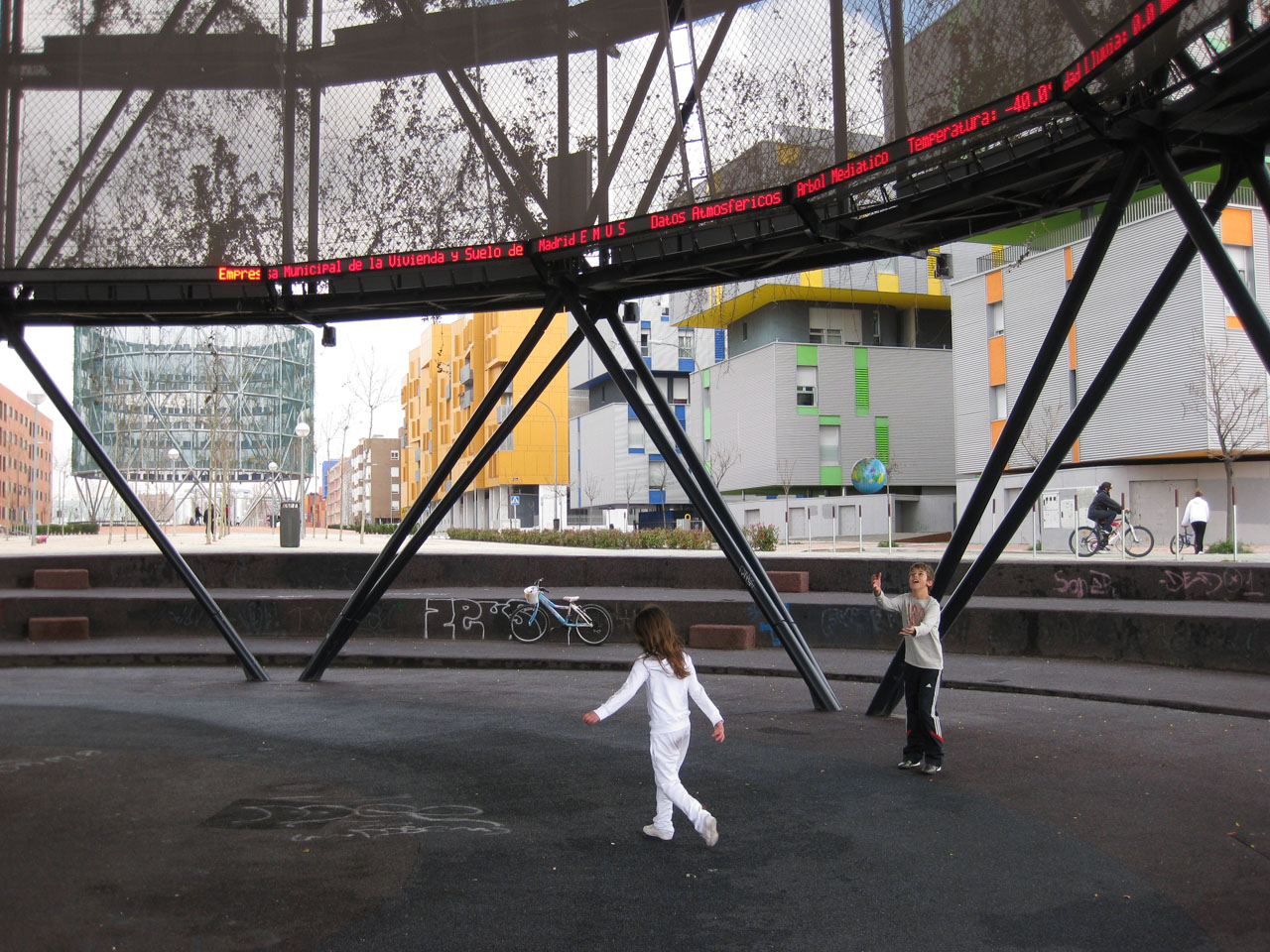
Plunked down in the middle of a concrete boulevard lined with ever-so-hopeful, newly planted trees, the three monstrous Air Trees are similar in size and structure. However, the third Air Tree stands out from the rest in its appearance and function. Surrounded by silver elongated tubes, this Air Tree has an essential characteristic that makes it perfect designed for this arid neighborhood: it has a natural air conditioning system or “air carriers." Because Madrid’s southern suburbs are even hotter and drier than the city center, newer neighborhoods like Vallecas normally have very little vegetation, resulting in poor air quality and circulation.
Through a system of rooting vegetation and water vaporizers, this Air Tree naturally cools and circulates air. Plants on the interior of the Air Tree create humidity, which rises up through the circular structure. The exterior tubes are oriented to absorb this hot air, which is then passed through a humidifier, cooling the air and passing it down through the tubes. The end result is natural, fresh air released into the center of the structure, cooling the area by about 8°C–10°C, creating a welcome respite from the summer heat.
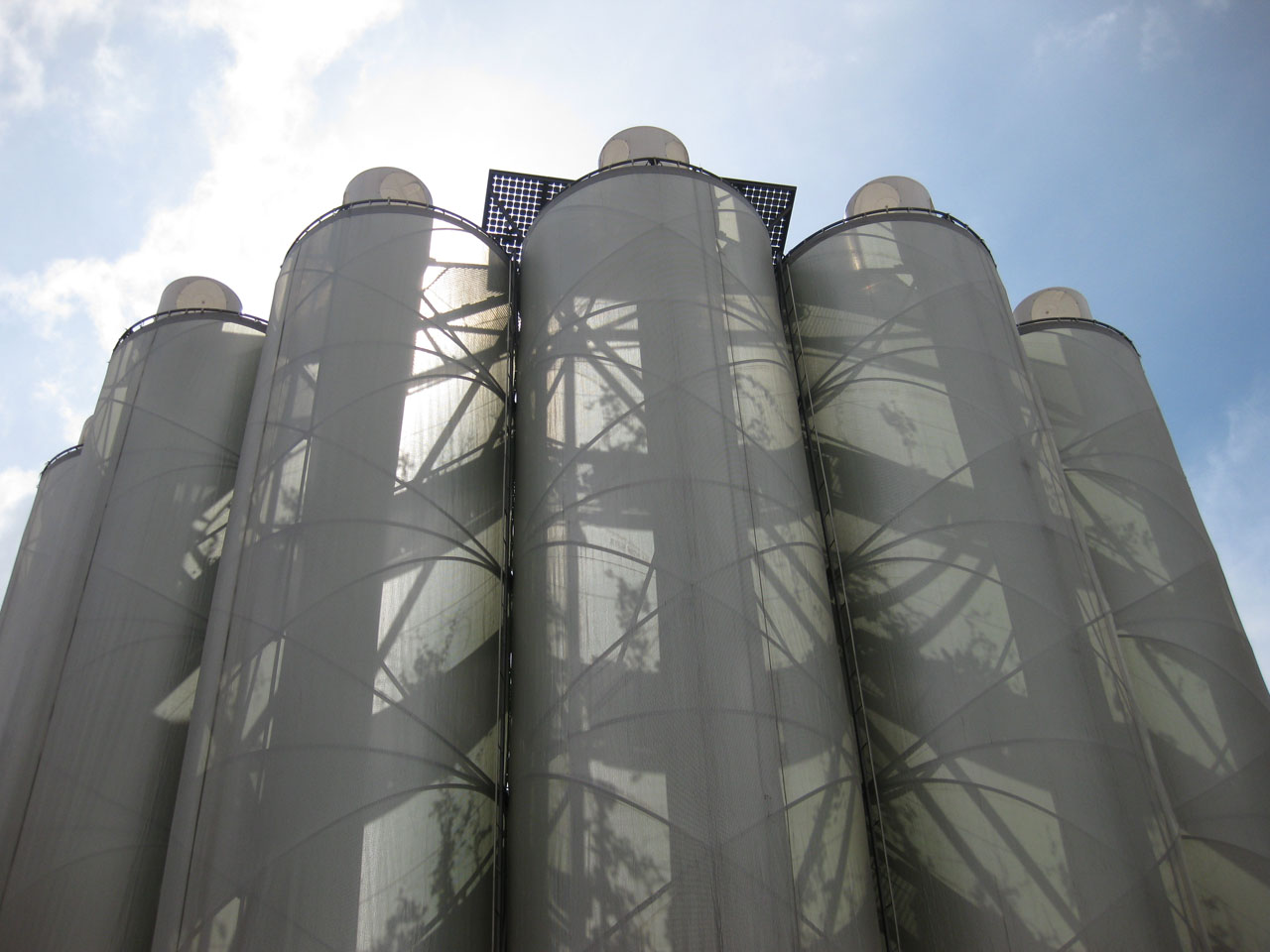
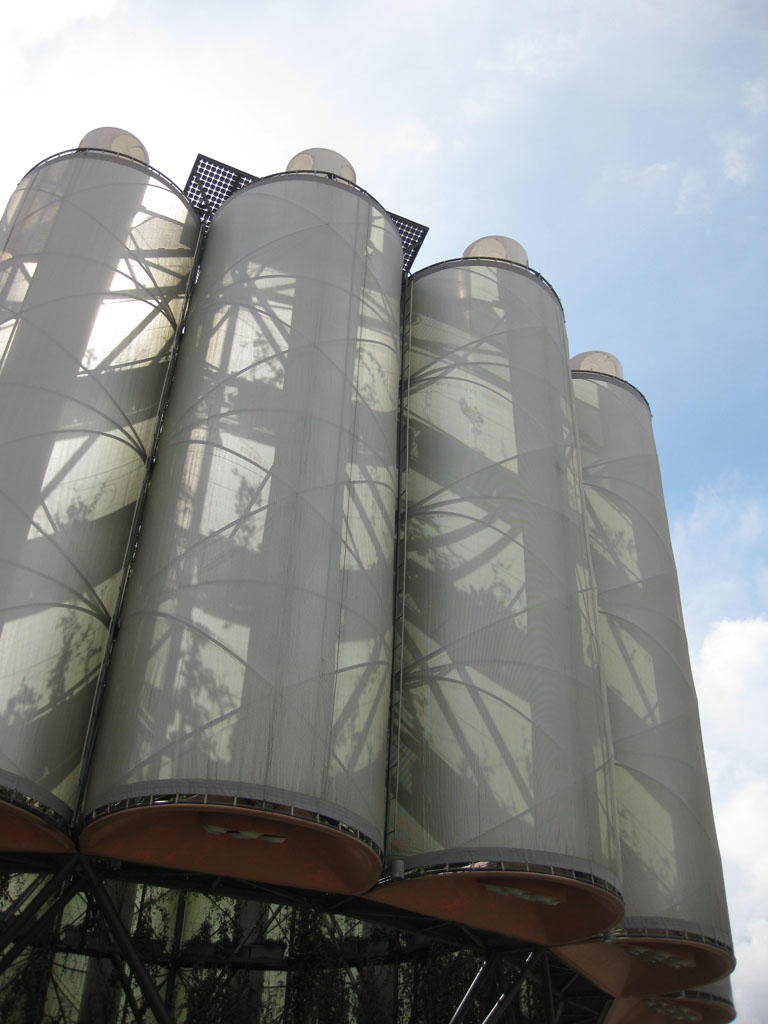
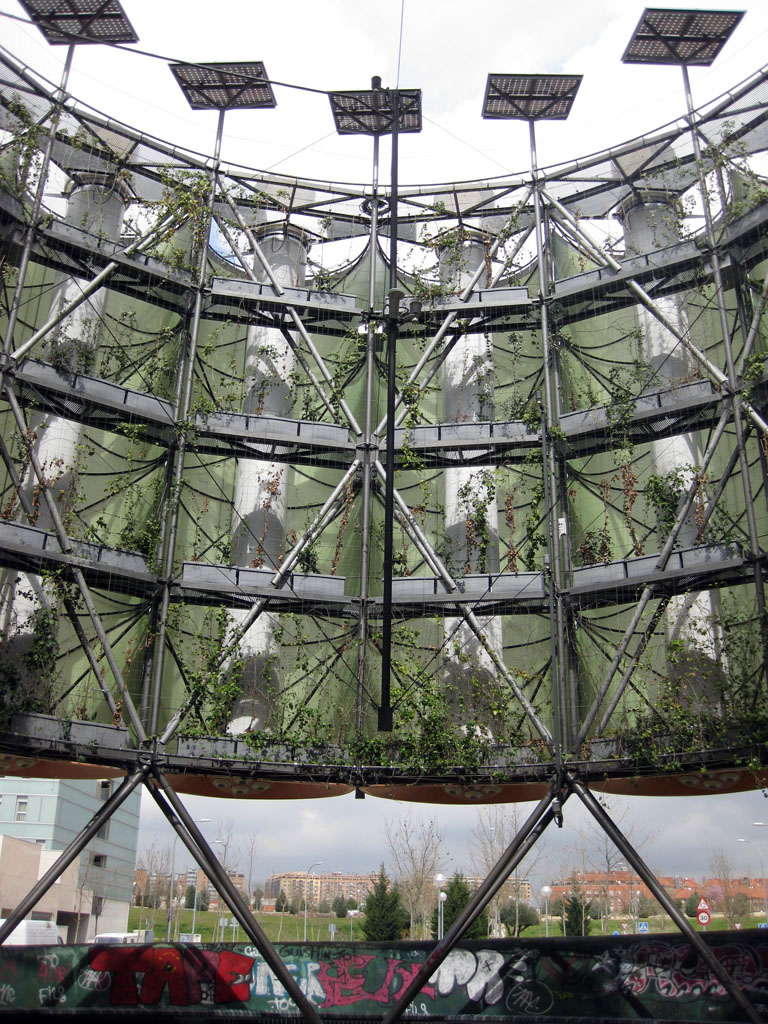
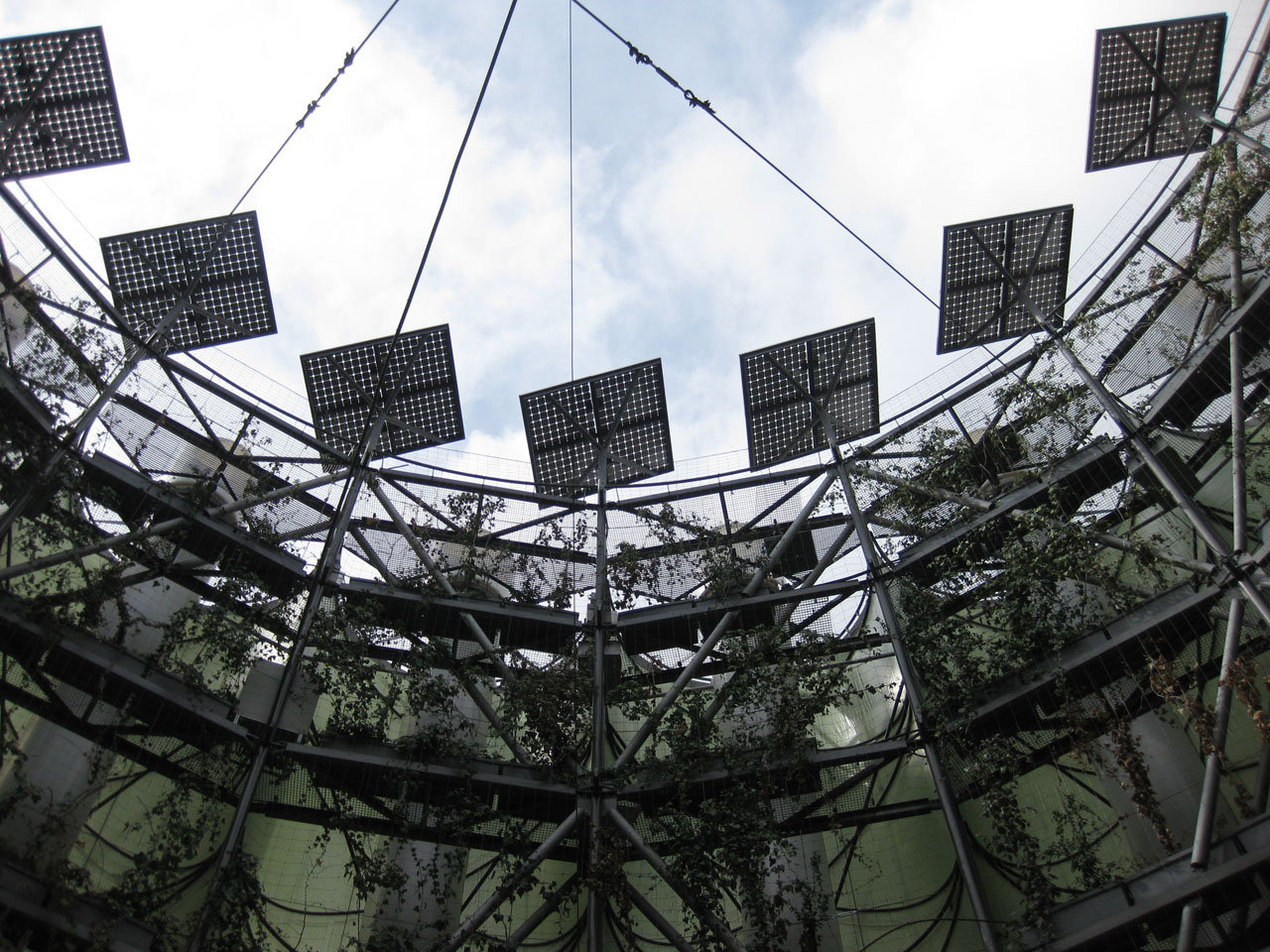
Ecosistema Urbano's Air Tree is a breakthrough for sustainable public space design. However, it’s not only that Air Trees are 100% energy-efficient and profitable. Their distinction lies in the fact that they can be easily relocated. The entire structure is built to be lightweight and transportable, meaning that once actual trees and vegetation are established in developing areas, the Air Trees can be dismantled and reused for other urban development projects.
In 2007, Ecosistema Urbano's Eco-Boulevard design beat more than 400 teams around the world for the Architectural Review (AR) Awards for Emerging Architecture. The Architectural Review jury considered that the transportable aspect of the Air Tree's design to be one of its most impressive attributes, because it embodies “the idea that a temporary structure could make a long-term proposition about the way a city streetscape might adapt in the context of ever hotter urban environments.” Ecosistema Urbano continues to work on multiple urban design projects called “eco-technological cities” financed by the Spanish Ministry of Industry.

Nicole Jewell
Nicole graduated from Georgia State University with a Post Graduate degree in Spanish to English Translation and a B.A. in Spanish and International Business. Presently living in Madrid, Nicole works as a freelance writer and translator and enjoys traveling around the Iberian peninsula taking photos of Spain's rich blend of historic and modern architecture. Her articles and photos have been published in various trade publications and websites.
Website: www.passtheham.com/
